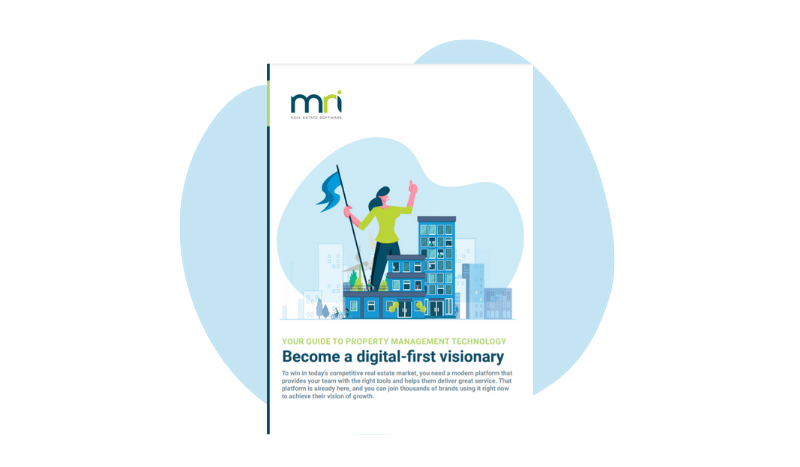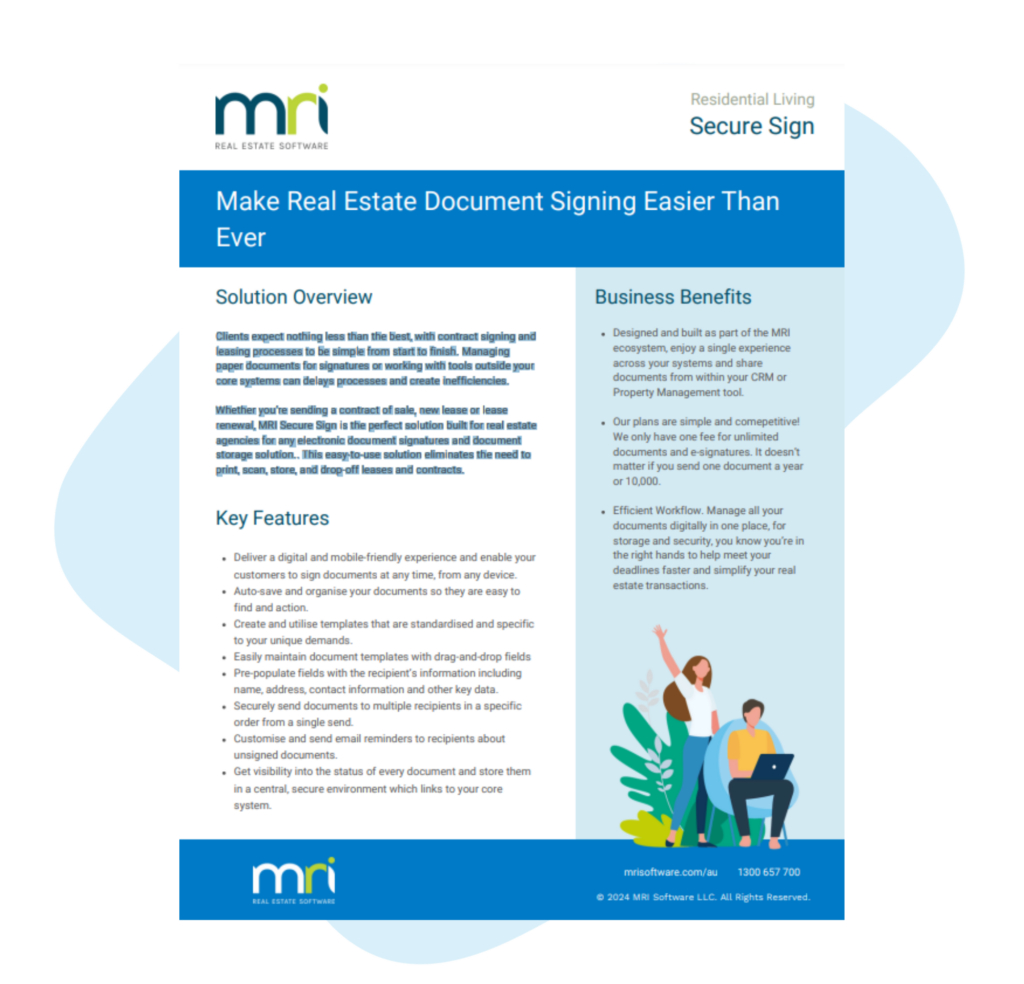Business continuity and disaster recovery (BCDR): A guide to uninterrupted business operations
Imagine if a sudden power outage halted your ability to collect rent or communicate with tenants. For property managers and landlords, disruptions like these can lead to tenant dissatisfaction and financial losses. Business continuity disaster recovery (BCDR) is the framework that ensures your operations keep running smoothly, no matter what challenges come your way.
Guide to Property Management Technology
Discover easy-to-use technology to set your business up for success.

What is business continuity?
Business continuity is about ensuring your business stays operational during unexpected disruptions. For property managers, this means tenants can still pay rent, communicate concerns, and access services even if there’s a power outage or IT system failure. It’s not just a plan—disaster recovery business continuity offers peace of mind for both you and your tenants.
A strong business continuity plan (BCP) focuses on critical services that must keep running no matter what. This involves identifying potential risks, like server outages, and creating actionable strategies to handle them. For example, a property manager might rely on cloud-based rent payment systems that remain accessible even during a local disaster.
Key components of a business continuity plan (BCP)
- Business impact analysis (BIA): Identify essential operations, like rent collection platforms, and assess what would happen if they went offline.
- Risk assessments: Pinpoint potential threats such as cyberattacks, natural disasters, or regional outages.
- Emergency communication plan: Have a strategy for keeping tenants informed during crises via text, email, or online portals.
- Data backups and redundancy: Use cloud storage to ensure access to tenant records and lease agreements, even during IT issues.
What is disaster recovery?
Disaster recovery (DR) focuses on restoring your IT infrastructure and systems after a disruption. While business continuity keeps your operations running, DR deals with how quickly you can get back to full functionality once the crisis has passed. For example, restoring tenant communication systems or accessing property records after a server crash is part of DR.
The main goal of DR is to minimise downtime and prevent permanent data loss. For property managers, this includes having robust data backup systems and predefined recovery steps for restoring essential services. By acting quickly, you can reduce financial losses and maintain tenant trust, even during major disruptions.
Business continuity vs disaster recovery
Business continuity and disaster recovery (BCDR) often go hand-in-hand, but they address different parts of the problem. Business continuity is proactive and focuses on keeping essential operations running during a disruption. Disaster recovery is reactive, dealing with how quickly you can restore systems and recover data afterward.
What is the difference between business continuity and disaster recovery?
- Business continuity: Ensures tenants can pay rent during a flood.
- Disaster recovery: Restores your rent payment system after the flood damages your servers.
Integrating business continuity management and disaster recovery
Integrating business continuity management disaster recovery ensures your strategies work cohesively for maximum efficiency. Coordination between teams is essential so everyone understands their roles in both maintaining operations and restoring them after a disruption. A unified approach helps you respond more effectively during emergencies.
Cloud-based solutions are invaluable in bridging the gap between continuity and recovery efforts. For example, how cloud based systems support business continuity is evident in their ability to provide secure, remote access to critical data like tenant records. These tools ensure that property managers can operate seamlessly, even if physical offices are inaccessible.
Choosing the right BCDR solutions for your business
Not all BCDR solutions are created equal, so it’s essential to choose one tailored to your business needs. For property managers, cloud-based tools with strong data security and backup capabilities are a must. They protect sensitive tenant information while ensuring you can quickly recover from disruptions.
When evaluating BCDR solutions, ask these questions:
- Does the solution comply with regulations like HIPAA or data protection laws?
- Can it scale with your business as you grow?
- Does it offer user-friendly features like tenant portals or automated backups?
Solutions like MRI managed services for property accounting combine compliance, reliability, and efficiency to simplify continuity planning. The right BCDR solution saves time and protects your operations when it matters most.
Challenges in business continuity and disaster recovery
One major challenge in business continuity and disaster recovery (BCDR) planning is balancing cost with preparedness. While it may seem expensive to invest in continuity solutions, the costs of downtime are far greater, with some businesses losing thousands of dollars per minute. For property managers, this could mean lost rent payments and potential tenant dissatisfaction.
Keeping plans updated is another hurdle, especially as new risks emerge, or business operations evolve. For example, as more property managers adopt digital payment platforms, the risk of cyberattacks increases. Regular updates and testing ensure your plan remains effective in addressing these evolving challenges.
Best practices for business continuity and disaster recovery
Implementing business continuity and disaster recovery (BCDR) strategies successfully requires following industry best practices. These practices ensure your plan is comprehensive, actionable, and ready to mitigate the impact of any disruption. Let’s go over the top best practices for you to consider.
Regularly update your BCDR plan
Your BCDR plan must evolve with changes in your business, such as new properties or technology upgrades. Regular reviews help you address emerging risks and refine your strategies. Updating your plan ensures it remains aligned with current business goals and operational needs.
Conduct frequent testing and simulations
Simulations, like practicing response to a cyberattack, allow your team to test the plan under realistic conditions. These exercises help identify weaknesses and build confidence in your team’s ability to respond. Testing also ensures all recovery tools, such as backup systems, are functioning as intended.
Ensure clear communication during a disaster
A well-thought-out communication plan ensures tenants and staff are informed and reassured during disruptions. For example, timely updates about a power outage can prevent confusion and maintain tenant trust. Clear communication minimises panic and helps everyone stay on the same page.
Prioritise critical business functions and IT systems
Focus your resources on maintaining operations like rent collection and tenant communications. Prioritising these systems ensures that essential functions continue during a disruption. For example, having a backup system for online rent payments can prevent interruptions.
Ensure employee awareness and training
Your team must know their roles during a crisis to respond effectively. Regular training sessions and drills keep employees prepared and confident. A well-trained team reduces response time and ensures a smoother recovery process.
How MRI Software supports landlords with resilient BCDR solutions
MRI Software helps landlords maintain operational continuity with innovative facilities management software designed for resilience. Our digital rent payment solutions enable tenants to pay securely and conveniently, even during disruptions. By automating critical processes, our software reduces downtime and ensures uninterrupted service delivery.
FAQs
Contact MRI Software
If you want to find out more about our innovative solutions, contact us today.
Make Real Estate Document Signing Easier Than Ever
Clients expect nothing less than the best, with contract signing and leasing processes to be simple from start to finish. Managing paper documents for signatures or working with tools outside your core systems can delays processes and create ineffici…

